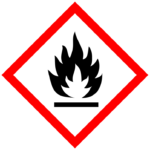Written on: March 1, 2015 by Mike Moffatt

The beginning of 2015 saw companies scramble to meet GHS deadlines. The June 1 deadline for label and safety data sheets (SDS) compliance in both the U.S. and the EU is rapidly approaching. Also, The U.S. Occupational Safety & Health Administration (OSHA) recently denied some relief on that timeline.
It’s not all bad news, however. There is some good news that has come out of Canada so we will start our discussion there.
 Aerosol classifications will be harmonized between the U.S. and Canada
Aerosol classifications will be harmonized between the U.S. and Canada
There was a great deal of concern among the regulatory compliance industry that the Canadian implementation of the Globally Harmonized System of Classification & Labeling of Chemicals (GHS) would use aerosol classifications from the most updated version of the UN’s purple book and, in so doing, would cause the Canadian regulations for aerosols to significantly deviate from the US’s Hazcom 2012 regulation. One of our consultants, Mae Hrycak, expressed her concerns to Health Canada:
While reviewing the Proposed Hazardous Products Regulations (HPR) we have come across a discrepancy. Would you be able to provide clarification on the following?
The proposed Canadian HPR state that the 5th Revision of the Purple Book is going to be followed. The 5th revision includes a new Aerosol Classification (Aerosols/Aerosol 3) which is used instead of the Compressed Gas classification when you find your Aerosol is Not Flammable.
However, when you look in the HPR at the classification criteria for Aerosols [7.3.1 (1)], the Aerosol 3 class is not included. Should we proceed using the Aerosol classification criteria found in the Purple Book 5th revision or what is seen in the HPR?
We shortly received this response from Health Canada, assuring us that the 5th revision will not be used for this classification:
Thank you for your question regarding the classification of aerosols under the proposed HPR.
You are correct; the name of the hazard class in the proposed HPR is “Flammable Aerosols” rather than “Aerosols.” To classify flammable aerosols, a supplier should follow the criteria in the proposed HPR rather than the criteria found in the GHS (rev. 5).
The proposed HPR does refer to the 5th revision of the GHS Purple Book and the proposed Regulations are aligned with the GHS 5th revision with regard to the classification criteria and hazard communication elements for many of the hazard classes.
This is great news for the aerosol industry. The last thing any of us needed was to have two different sets of aerosol classifications between the U.S. and Canada. There are enough differences between Hazcom 2012 and the proposed Hazardous Products Regulations as it is!
 OSHA denies general relief to manufacturers, will use enforcement powers on case-by-case basis
OSHA denies general relief to manufacturers, will use enforcement powers on case-by-case basis
A request by the American Coatings Association (ACA) to modify enforcement policy and extend the deadline for Hazcom 2012 compliance was denied by OSHA. The issues identified here by the ACA will sound all too familiar to formulators:
ACA and the supporting trade associations were compelled to petition OSHA for relief due to the lack of updated hazard classifications for raw materials down the supply chain. When issuing the final rule, OSHA applied the same compliance date of June 1, 2015 for raw materials, intermediate mixtures and final formulated products. OSHA assumed that currently available data and expected early compliance would allow for sufficient time for product formulators to receive or locate the necessary HCS compliant SDS and then process the information to create new labels and SDS. Unfortunately, this scenario has not played out as OSHA expected. Compliance with the single deadline for many manufacturers of formulated products has been virtually impossible since manufacturers of individual raw materials are not required to provide SDS that conform to the new standard until the June 1, 2015 deadline for all manufacturers.
We have seen this all too often at Nexreg, where companies do not have access to the upstream information to ensure their SDS and labels are fully compliant with GHS. OSHA’s decision not to follow the EU in having a staggered phase-in for mixtures and substances has caused difficulty, and neither the EU nor the U.S. made allowances for the issue of intermediate mixtures. How are companies supposed to be Hazcom 2012 compliant when their upstream suppliers are tardy in providing them with Hazcom 2012 information on raw materials and intermediate mixtures?
To OSHA’s credit, they recognized the problem and have offered a solution:
OSHA is able to use its enforcement discretion when compliance staff consider whether formulators and manufacturers have performed their due diligence and made good faith efforts to obtain necessary information to comply with the June 1, 2015 deadline. Our policy allows us to consider barriers to the downstream flow of information that are beyond their control. Manufacturers and formulators should therefore document all efforts to alternatively obtain the required information such as: attempts to contact their supplier to obtain the proper information; reasonable efforts to find alternate suppliers who could provide timely and accurate classifications, and reasonable efforts to find relevant data themselves… The agency intends to apply the same approach to distributors that can demonstrate that they have received chemical labeled under this policy.
Here is our advice to companies that have not been able to obtain the information they need to ensure products have compliant labels and SDS:
In my next column, we will be examining updates to California’s Proposition 65 along with the final version of Canada’s Hazardous Products Act if released in the next three months. Until then, we will be working hard meeting GHS deadlines around the world!